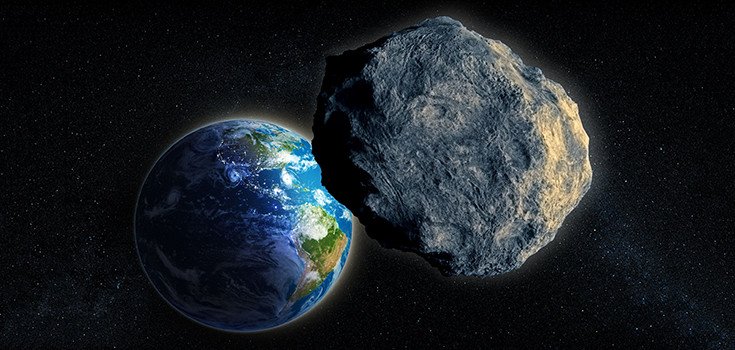We Dodged an Asteroid, but What Unseen Dangers Lurk in the Skies?

If you were among those who predicted that a massive asteroid would slam into Earth last weekend, pour yourself a cup of coffee and relax. You’re still here, but it was a near miss.
The 2-mile-wide chunk of rock about a quarter of the size of Mount Everest zipped past the U.K. as Britons snuggled in their beds, passing about a million miles closer than NASA had predicted. The asteroid was more than 15 times larger than any of the other space objects being tracked by the space agency. [1]
Racing through the sky at 400,000 miles per hour, the asteroid could have wiped out a small country and killed thousands of people if it had impacted our planet. It’s a potential crisis that reminds us of the very-real necessity of being prepared for any emergency situation.
NASA says the 1862 Apollo asteroid was first spotted 16 years ago and was classified as a potentially hazardous object (PHO) with the potential to make close approaches to the earth and cause significant regional damage should it strike the planet. An object is considered a PHO if it comes within 4,600,000 miles of Earth.
The next time a massive asteroid is expected to graze the third rock from the sun is sometime between 2038 and 2114. [2]
“The danger is in the future if asteroids like this are nudged off their orbit they can effectively become missiles,” explained Bill Napier, a professor of astronomy at the University of Buckinghamshire in the U.K.
“There are a lot of asteroids out there with the potential to be hazardous which have not been discovered.”
And many of those asteroids – as well as comets and meteorites – aren’t even visible to us.
Since 1998, NASA has been working to find and track asteroids greater than 1 km in size. In 2005, Congress asked the agency to find 90% of all asteroids 140 meters or larger by 2020. It’s unlikely that NASA’s Near-Earth Object Program will be able to meet that deadline.
Read: Awesome Pictures Taken by NASA
“The systems we have are for larger objects…We could do it with the assets we have available given enough time. But if you want to accomplish it on the order of a decade or two, you of course have to have more capable systems in order to do that,” said Lindley Johnson, the NASA executive in charge of the program.
The National Academy of Science estimates that it will require $100 million a year to meet the federal government’s demands – the same amount the Federal Highways Administration is permitted to give a state to rebuild roads after a single natural disaster. Realistically, an asteroid defense system is more likely to cost about $2 billion between now and 2025 – just under $200 million a year – if building and testing a mitigation program is factored in.
So, if NASA is only looking for “big” asteroids, who is looking out for smaller asteroids, comets, and meteorites that wouldn’t wipe out the human race, but could still cause potential devastation?
On February 15, 2013, an untracked meteorite estimated to be about 10 tons and about 49 feet wide entered the earth’s atmosphere over Russia at a speed of at least 33,000 mph, exploding about 18-32 miles above ground. Several kilotons of energy were released by the meteorite above the country’s Chelyabinsk region. [3]
About 1,200 people were injured in the meteorite crash, some critically. Some 3,000 buildings were damaged and the total amount of window glass shattered amounted to 100,000 square meters. Some buildings were left without gas, and Internet and mobile services in the city was interrupted. A local zinc factory suffered the most severe damage when a portion of its roof and some of its walls collapsed.
Some scientists worry that the next time a space object takes aim at the planet – which one inevitably will – the nation under fire could mistakenly interpret it as a missile attack and unwittingly launch another war.
“My great fear is that you have two countries on the brink of war and something like this happens … and someone reacts to it,” K.T. Ramesh, professor of science and engineering at Johns Hopkins Whiting School of Engineering and founding director of Hopkins Extreme Materials Institute, told Fox News in 2013.
Sources:
[1] Express
[2] Mirror
[3] RT
